1. Thurmond, West Virginia

Thurmond was once a bustling railroad town, strategically located along the Chesapeake & Ohio Railway. It was full of life in the early 1900s, hosting hotels, banks, and even a movie theater. But as rail travel declined and the coal industry shifted, Thurmond lost its reason to exist. People gradually packed up and moved away in search of better opportunities.
By the 1950s, the population had dropped sharply, and today only a handful of residents remain, according to Chris Robertson from 59 News. The National Park Service maintains much of the town as a historical site. It’s eerily well-preserved, but undeniably empty. Thurmond’s fall was slow, but it was final.
2. Kennecott, Alaska
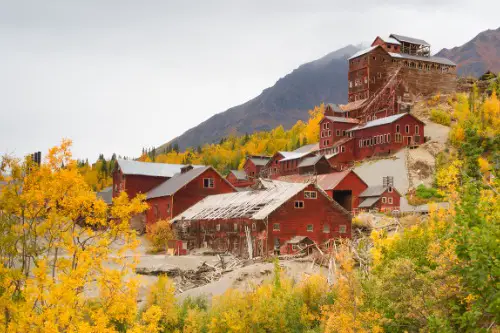
Tucked deep in the Alaskan wilderness, Kennecott was a company town built around one of the richest copper deposits ever discovered. Between 1911 and 1938, it produced millions of dollars’ worth of ore and housed hundreds of workers and their families. But when the copper dried up, the mining company pulled out almost overnight. Families left, stores closed, and Kennecott became a ghost town in a matter of weeks.
Now, it’s a hauntingly beautiful place preserved by the National Park Service. Old mining equipment and wooden buildings still cling to the mountainside, weathered by time. No one lives there, but curious travelers hike in to witness what’s left. It’s a snapshot of an industrial boom that couldn’t last.
3. Centralia, Pennsylvania
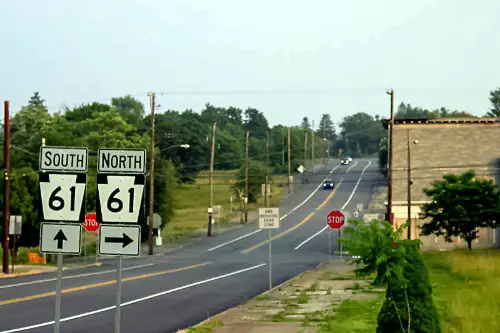
Centralia used to be a quiet coal town with a tight-knit community, nestled in the hills of Pennsylvania. But everything changed in 1962 when a coal seam beneath the town caught fire—and never stopped burning. Toxic smoke, sinkholes, and deadly gas leaks eventually forced nearly everyone to leave. By the 1980s, the government stepped in, offering buyouts to residents who were living on top of an underground inferno.
Today, Centralia is practically a ghost town, with just a few stubborn residents refusing to leave, according to Katie Serena from All That’s Interesting. Streets still exist, but most of the buildings are gone, and eerie steam vents rise from the ground. It’s like something out of a dystopian novel, but it really happened. What was once a charming coal community has turned into a cautionary tale of environmental disaster.
4. Cairo, Illinois
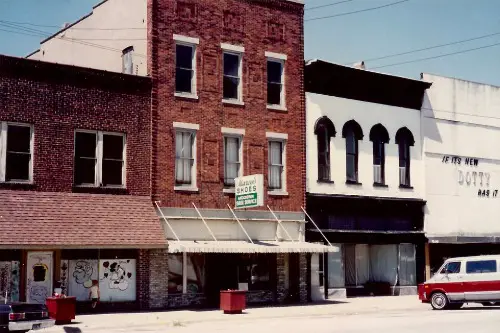
Cairo sits at the southern tip of Illinois, right where the Ohio and Mississippi Rivers meet. It was once a thriving river port town with big potential, especially during the steamboat and railroad boom. But deep racial tensions boiled over in the 20th century, sparking boycotts and riots that scared off businesses and investment. That social unrest, combined with geographic isolation, sent the town into a slow and painful decline, according to Mark Hotz from Numismatic News.
By the 2000s, entire blocks were abandoned, and public housing was torn down with no plans to rebuild. Residents who stayed watched their town hollow out before their eyes. Now, Cairo feels like a place suspended in time—empty storefronts, boarded windows, and a haunting silence. Locals left in droves, and few have returned.
5. Bodie, California
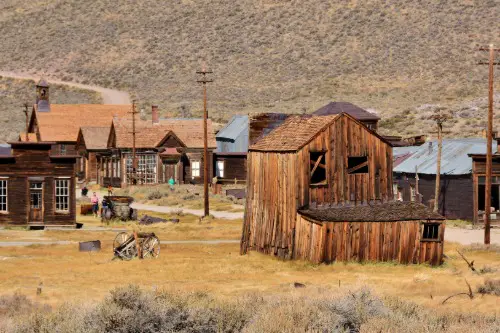
Bodie was booming in the late 1800s thanks to a rich gold strike in the Sierra Nevada mountains. The town had saloons, a red-light district, and even its own Chinatown—classic Wild West stuff. But when the gold ran out, so did the people. By the early 20th century, Bodie’s population had dwindled to a fraction of its former size.
Today, it’s a preserved ghost town managed by the state of California as a historic park. The homes still have furniture inside, frozen in time as if the owners might walk back in any second. Tourists can visit, but no one lives there anymore. It’s the ultimate example of a boomtown that just… fizzled.
6. Picher, Oklahoma
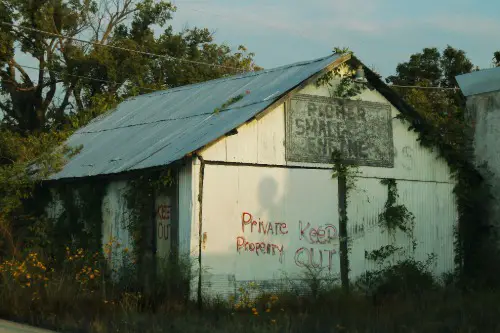
Picher was once a proud lead and zinc mining town, critical to America’s efforts in both World Wars. But decades of unregulated mining left toxic waste—called “chat”—piled in massive mounds all over town. By the 1990s, water contamination and lead poisoning reached crisis levels, especially among children. Then, in 2008, a devastating tornado leveled what was left.
The government declared it unsafe and initiated a full evacuation. By 2009, the post office had closed, and the town was officially dissolved. The ground is unstable, the air is dangerous, and the people are gone. Picher is now one of the most contaminated places in the U.S.—and completely empty.
7. Gilman, Colorado
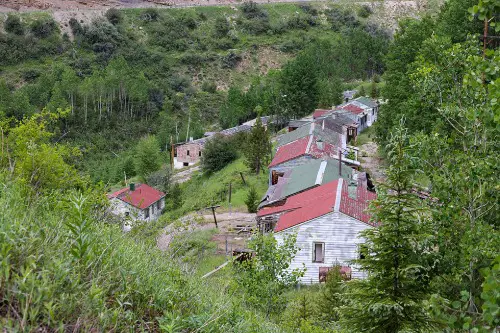
High in the Rocky Mountains, Gilman was founded in the 1880s as a silver mining town. Over time, it became a hub for zinc and lead production, growing into a vibrant community. But by the 1980s, heavy contamination from mine tailings had poisoned the area’s water and soil, according to Kenneth Jessen from Loveland Reporter-Herald. The EPA stepped in, and in 1984, the town was forcibly evacuated.
The buildings still stand—homes, a hospital, even a bowling alley—but they’re empty and off-limits. Gilman is now a Superfund site, too dangerous to reinhabit. Nature is slowly reclaiming it, but the ghosts of industry remain. It’s a stark reminder of what unchecked development can do to a place.
8. Times Beach, Missouri

Times Beach started as a summer retreat for St. Louis families looking for a quiet escape. Over time, it grew into a small town with permanent residents. But in the 1970s, officials sprayed the roads with waste oil to control dust—not realizing it was contaminated with dioxin, a highly toxic chemical. The contamination was so severe that in 1983, the government ordered a total evacuation.
Everyone had to leave, and the town was wiped off the map. Even the buildings were burned in an EPA incinerator to destroy the toxin. Today, it’s the site of Route 66 State Park, but no one calls it home. It’s a surreal story of how something as simple as dust control ruined an entire community.
9. Eagle Mountain, California

Built in the 1940s by Kaiser Steel, Eagle Mountain was a model company town designed to support the largest open-pit iron mine in Southern California. It had everything—schools, homes, even a golf course. But by 1983, the mine shut down due to foreign competition and declining profits. Without the mine, the town had no reason to exist.
Residents moved out quickly, and the town was officially closed. Various attempts to repurpose the site—a prison, a landfill—never quite took off. Now it’s a fenced-off shell, slowly decaying in the desert. The story of Eagle Mountain is one of ambition that dried up as fast as the economy changed.
10. Bombay Beach, California
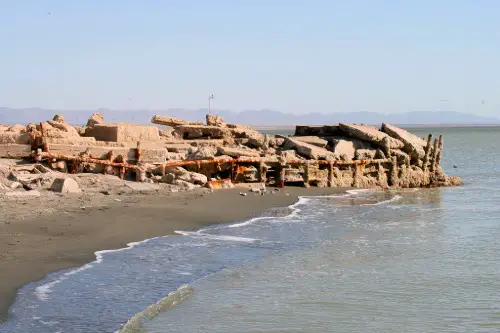
Located on the edge of the Salton Sea, Bombay Beach was once a desert paradise in the 1950s and ’60s. It attracted vacationers, celebrities, and retirees with its warm weather and scenic views. But agricultural runoff caused the lake to become increasingly salty and toxic, leading to massive fish die-offs and unbearable smells. The tourists stopped coming, and soon, so did the residents.
Now, the town is mostly abandoned, with crumbling homes and rusting trailers scattered around. A few artists and eccentrics have moved in, turning it into a quirky, surreal art colony. But it’s far from the resort town it once was. Bombay Beach is a faded postcard from a future that never came.
11. Garnet, Montana
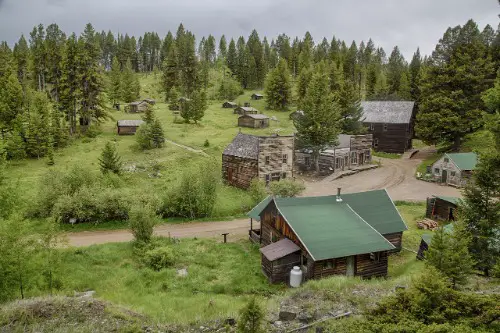
Garnet was a bustling gold mining town in the late 1800s, full of saloons, shops, and hardworking miners. But unlike other boomtowns, Garnet faded quickly and quietly. By 1905, most of the gold was gone, and a devastating fire in 1912 sealed its fate. People packed up and left, abandoning homes, shops, and even dishes on tables.
Today, it’s one of the best-preserved ghost towns in the West. The Bureau of Land Management keeps it open for visitors, but no one lives there full-time. Walking through Garnet feels like time travel—everything’s still standing, just empty. It’s peaceful, beautiful, and undeniably abandoned.
12. Rhyolite, Nevada
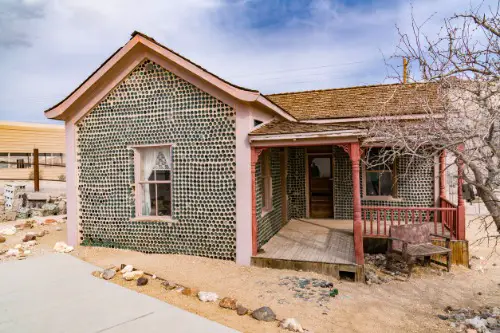
Rhyolite rose out of the Nevada desert almost overnight in the early 1900s, thanks to a massive gold rush. The town boomed with banks, a stock exchange, an opera house—even electricity, which was rare for the time. But the gold dried up within just a few years, and the population plummeted just as fast. By 1916, Rhyolite was practically deserted.
Today, all that’s left are crumbling ruins and scattered relics of ambition. The iconic bottle house, made entirely of glass bottles, still stands as a weird but wonderful landmark. It’s a favorite stop for road-trippers, but no one calls it home. Rhyolite’s fall was fast, brutal, and final—just like its rise.


